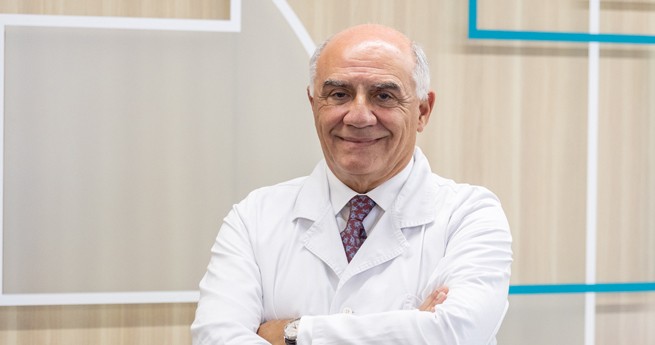The Cardiovascular Research Center (CRC) was recently established in the Luz Saúde group under the coordination of cardiologist Victor Gil, outgoing President of the Portuguese Society of Cardiology. The main objective is clear: “We want to provide an organized response to the challenge of establishing a Cardiovascular Research Center”.
According to the doctor, “the first step was to create a group of ‘investigative facilitators’, to think about the paths to follow, taking care to follow the integrative rules of the Research Center of the Health Teaching Hospital da Luz and to clarify, at any time possible, with the Clinical Academic Center (CAC) Católica – Luz”.
Then, “with the cardiovascular patient at the heart of the decision,” he explained, interdisciplinary research projects were identified “and the appropriate scientific partnerships were established for each project, in order to also advance academic pathways.”
4 research projects in planning
The CRC team is currently “finalizing details of the financial engineering and science partnerships,” which will allow it to continue to advance the investigations of the four science projects, accepted for support by Luz Saúde and which address the following topics:
1) Using cluster analysis of phenotypic patients with coronary atherosclerosis according to plaque burden and composition
2) Metabolism in atherosclerotic obesity
3) Clonal blood poses a potential non-specific cardiovascular risk? Addressing the role of the lining
4) Randomized Clinical Trials in Structural Cardiology – A randomized clinical trial of intravenous iron supplementation after TAVI to improve functional capacity
Immediate Application: Ferric Carboxymaltose Use
Victor Machado Gil, who also coordinates the newly created Center for Cardiovascular Risk and Thrombosis at Hospital da Luz Torres de Lisbon, is developing this project “with immediate clinical application”, among the four ongoing projects:
“It is the use of iron carboxymaltose as a complementary therapy in the implantation of transdermal prostheses, with the aim of further improving functional capacity.”
Another project intends to read coronary angiography using computed tomography machine learning like “Cluster analysisIn order to establish homogeneous groups, which may have a “potential effect on clinical attitude towards patients, according to atherosclerotic burden and plaque formation.”
Victor Machado Gil
Focus on interdisciplinarity
Regarding the research project on metabolism in atherosclerotic obesity, he noted that it could be identified as an “example of an interdisciplinary project”. And you can find out why. Its principal investigator is an endocrinologist and has partnerships with the Department of Imaging – “a collaboration across three of the projects laid out in the plan” – and with the Faculty of Sciences of the University of Lisbon.
In his opinion, “This project will expand our knowledge about this new and wonderful world, which is atherosclerosis.”
As for the CHIP project (Hypomorphogenesis for Possible Unspecified Risk and Cardiovascular) it is part of “the most advanced and current area of knowledge in the mechanisms of atherosclerosis”, and it also encourages the intersection of different disciplines, in this case researchers from the Catholic University are involved.
The doctor explains that CHIP “focuses on a potential mechanism of atherosclerosis that deviates somewhat from traditional risk patterns,” so there is a conviction that it “could open doors to new situations and approaches.”
According to Victor Machado Gil, the time horizon of these research projects is variable, “which can last up to 3 years, starting from the second half of 2023”, underlining the emphasis: “They are based on the concept of translated research, with the applied practice of the results obtained, that is, “from bed to bench.”
He adds, “For example, in the ferrous carboxymaltose project, if the results are as expected, an immediate positive effect on patients’ quality of life can be achieved. In all other cases, the benefit is more intermediate, but the increase in knowledge always has its ultimate focus on the interest of The patients “.
This is precisely the central message left by the coordinator of the Center for Child Rights: “We work, think and dream about science for patients.”
The four projects developed by the Cardiovascular Research Center were presented on Friday, during the 2nd Luz Saúde Research Conference. In addition to Victor Machado Gil himself, CRC includes four other principal researchers: Afonso Félix de Oliveira, Antonio Ferreira, Daniel Macedo, and Bruno Cardoso.

“Wannabe internet buff. Future teen idol. Hardcore zombie guru. Gamer. Avid creator. Entrepreneur. Bacon ninja.”


.jpg)